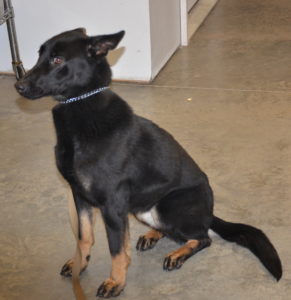The testing process is pretty simple. Master the hunt selection and don’t get sucked into the vortex of the bite.
I do not believe canine selection should be about how deep the bite is, how hard the bite is, how hard looking the canine is or how ‘beautiful’ the canine is. It’s about the hunt, a specific style of hunt and when it is identified, the other desired qualities fall into place.
Canine selection is the easiest, yet hardest, part of a canine trainer’s responsibility; a rollercoaster ride for many reasons. Trainers routinely deal with trust issues with canine vendors, availability of canines, the time involved to truly evaluate a canine, travel time, the actual costs for green canines these days and the end state (the successful completion of the final phase of the canine).
“Some vendors have mastered the art of selection training”
After the selection test and a canine is chosen, ultimately, you don’t know what you really have until you begin working with the canine. Selection success takes training experience in working with multiple canines of all ages, a solid understanding of canine genetics, and with most anything in life, a little bit of luck.
I evaluate Hunt drive outdoors first and inside after bite work (looking for transition-bite to hunt). I can sift through approximately 90% of the canines that are shown to me, not because they aren’t working canine potential, but because I am looking for a specific style of hunt. I understand there are multiple hunt styles; air scenting, ground scenting and the pattern type. All are good, but I’m referring to the style of how the canine is using their nose. The canine needs to be hunting frantically – in a hurried, excited or disorganized manner. Big picture there is nothing that a vendor can do to manipulate a canine’s hunt drive. Even then nothing camouflages a canine’s true hunt drive. So all the drive buildup by vendors, such as a kong on a rope as the canine approaches training area, is the vendor hoping the canine stays focused in training area and hunts just enough to show it has the drive to cinch the deal.
I let the vendors build the drive before they hand the canine to me, but once again you can’t hide true genetics no matter what you do. I don’t play fetch with the canine prior to the hunt test either. I have someone hold the leash and I walk out to the area, I place the ball and fake place it in three other areas. This eliminates the visual part of the hunt. As I approach the canine for release, I observe if canine displays aggressive behavior towards me (not to say this is not good, but noted). Once canine understands concept, no ball is placed and I observe the canine hunt for five minutes. If canine passes this phase, it’s looking good!
Next, defense and fight drives are tested. Since most of these canines are bred for the sport dog arena, which means trained with the sleeve foundation, I lay a sleeve on the ground throughout this test. I understand if the canine initially focuses on the sleeve, but I’m looking for the canine to adapt (does the fight/defense supersede equipment drive).
Sometimes I start with the suit and sometimes I start with a muzzle. The suit will help canine transition a little easier than the muzzle, it depends on the canines and how they hunted in the hunt portion of the test. Either way the canine is worked in suit, muzzle and civil. External, as well as, internal. I add a kicker at the end and have a pistol in my hand and will do a magazine change to see if the canine wants to engage me.
“If I am doing more work than the canine, the canine will not be selected”
Tip of the Month – Any chest wound between the first and last rib of your canine should be treated as a sucking chest wound, therefore treated with an occlusive dressing.
CANINE TACTICAL OF IOWA NEWS UPDATE
- KICK BAGS ARE CURRENTLY AVAILABLE http://www.caninetactical.com/kick.php.
- LOOK FOR CANINE TACTICAL OF IOWA, ‘BOOTH 11‘, AS WELL AS, A SPEAKER AT THE 2017 K-9 COP CONFERENCE AND VENDOR SHOW, HELD IN VEGAS ON THE 14TH, 15TH, 16TH OF MARCH 2017.
- CANINE TACTICAL’S TRAINING FACILITY IS A GI BILL APPROVED TRAINING SITE.
- LASTEST CANINE TACTICAL BLOG http://blog.caninetactical.com/blog/certification-series1-1/
- LATEST CANINE DELIEVERED FOR THE PETS FOR VETS PROGRAM:
CANINE 05007

